Why does the Decembrist not bloom and what to do?
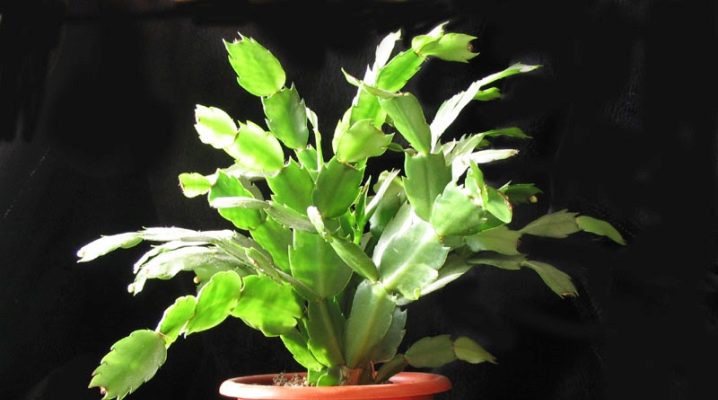
The Decembrist, aka Christmas, Decembrina, Schlumberger, Zygocactus is a guest from South Brazil, who has very successfully taken root on the windowsills of apartments in our latitudes. This plant of the cactus family has won love for itself not only with an interesting appearance, but also with an unusual flowering season. Some owners of this plant are faced with a situation where the Decembrist, for some reason, does not bloom. This article will discuss these causes and solutions to the problem.
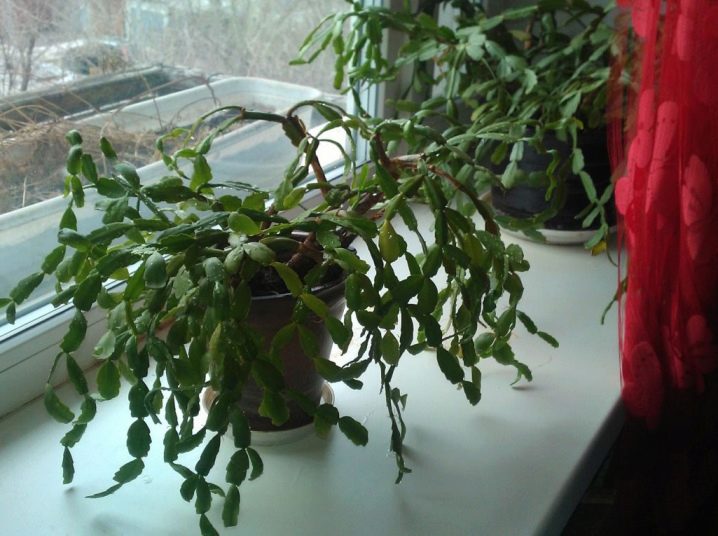
Conditions for flowering
In comfortable conditions, the Decembrist grows well, blooms magnificently and pleases the eye. The flowering period begins around the last week of November and ends in January. Sometimes the plant can bloom again after that. But this is more the exception than the rule.
It is not difficult to achieve flowering from the Decembrist exactly on time. It is important to give the plant a comfortable environment in which it will feel good.
These conditions include:
- protection of the plant from low temperatures or their drops;
- a permanent place (you should not move a pot with a plant from place to place, it is better to immediately decide where it will live);
- ensuring a state of dormancy in summer - plant feeding, protection from adverse conditions (sun, cold and drafts), fresh air;
- high-quality watering - the soil must be wet, it must not be allowed to dry out;
- planned plant transplant - do not neglect this action, so the soil in the pot will not "get tired" and will not be depleted;
- providing a comfortable container for life - a wide and necessarily low pot;
- good drainage at the bottom of the pot;
- preventing the sun from falling on the flower - direct rays will burn the plant.
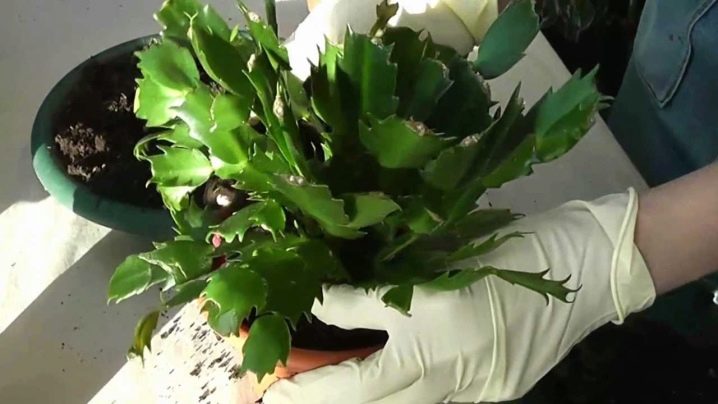
Why are there no flowers?
There are times when the Decembrist bloomed regularly, and then suddenly stopped, as if he didn’t want to. Sometimes this reluctance to bloom is delayed for several years. It is important to find out the causes of this phenomenon and eliminate them. Possible reasons for the Decembrist's refusal to bloom:
- unsuitable pot for a plant;
- lack of phosphorus, potassium and nitrogen;
- excess or lack of watering;
- non-observance of the period of rest and recovery;
- excess or lack of light;
- dry indoor air in the autumn-winter period;
- diseases and pests.
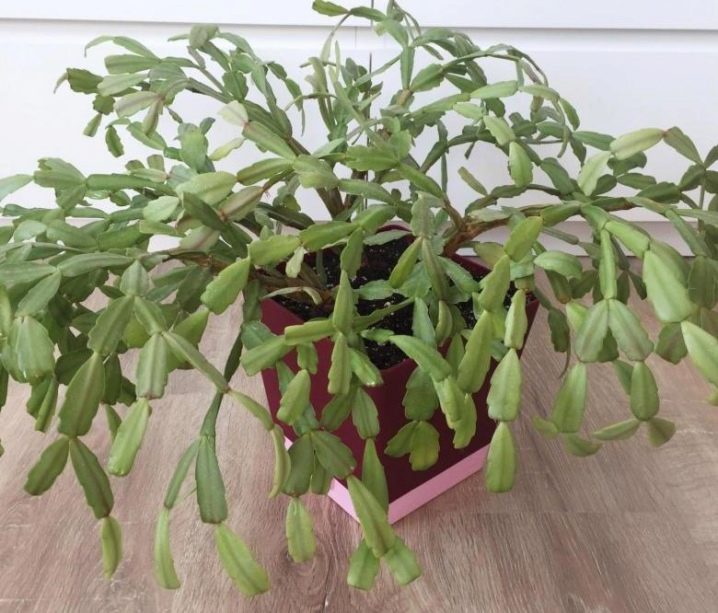
Influence of seasonality on a plant
The fact that the Decembrist was born in distant Brazil left its mark. In the countries of the Eurasian continent, its seasonality looks completely different and unusual for us. Depending on the time of year, you will need to take care of the Decembrist in different ways. Compliance with these differences is important so that the Decembrist has time to restore and accumulate strength for the new flowering season.
The period of flowering and the most peak activity falls on the time when the calendar is late autumn and winter. In this cold time the Decembrist requires constant spraying of the buds... This will provide him with the necessary moisture. When the plant blooms, you do not need to stop spraying. It is important to monitor the moisture content of the soil and avoid dryness. You will also need absolute rest for the pot and no feeding.
By February, the plant sheds flowers and stops blooming. If the plant does not get rid of dried flowers on its own, you can help him: gently tear off the last petals and remove the remnants of the inflorescences. Until April, the flower should be moved to a cooler place and watered once a week.
In April, you need to make the first top dressing. - an exhausted flower needs to restore the spent strength. Until June, once a month, fertilizer must be applied to the soil. The portion required at this stage is half the size recommended by the manufacturer. The Decembrist needs to provide partial shade. It is necessary to continue spraying it, from time to time you can wash the leaves with settled warm water.
After feeding, the plant is ready for transplanting or reproduction. Such actions should be carried out at the end of April or in May.
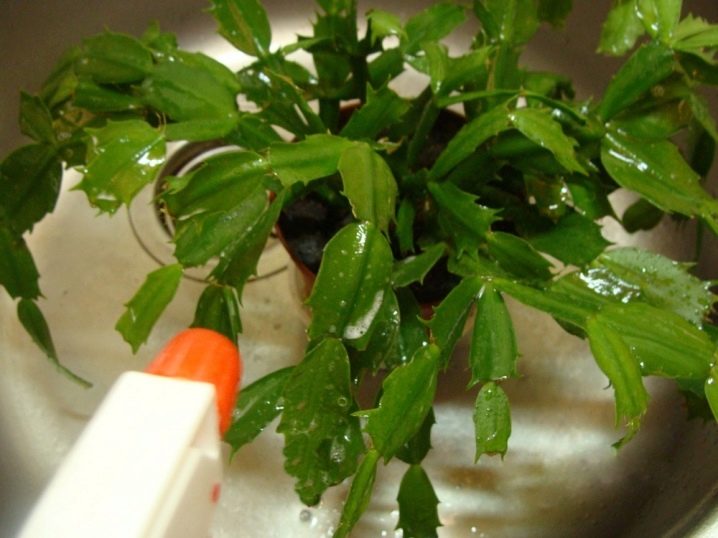
A young plant needs a transplant every year. At this time, the Decembrist is actively growing and "pulling" everything he can from the ground. An adult plant needs only one transplant in a five-year period.
In June, the plant must be moved to fresh air. You can take it outside, or you can put it on the balcony. The main thing is that the plant is not under the scorching sun. It would be better to place it in a shade or a place where only scattered, indirect rays can reach it. You also need to protect the flower from rain.
During this period, the rhythm of watering changes - you need to water only when the soil begins to dry out. Feeding is also becoming more frequent - now the plant needs to be fed 2 times a month, each time giving a full portion of fertilizers. In such conditions, the Decembrist will live until September, when his period of rest begins. This month, the flower needs to be moved back to the room where it will live before flowering.
Until November, the room temperature must not exceed 14 ° C and cannot drop below 10 ° C. Top dressing should be stopped, and watering should be reduced even more. At this time, the frequency of watering can be up to 1 time in 2 weeks. Flowering begins in November. Therefore, until December, gradually raise the temperature to 15 ° C and resume more frequent watering. The main thing is not to do this abruptly, so as not to injure the flower.
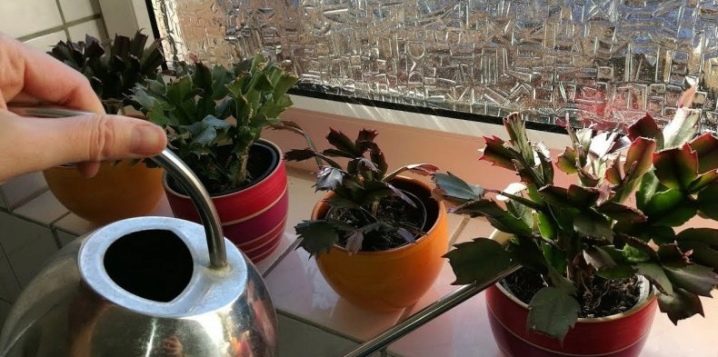
How to help bloom?
Exists folk remedies and secrets in order for the indoor Decembrist to bloom faster again. If the room where the Decembrist lives is cool and humid, its flowering can be stimulated by a gradual rise in temperature. The main thing is that it does not go beyond the permissible limits.
For the Decembrist to bloom after stagnation, it is important to renew its soil... If the plant is not replanted annually, it will be helpful to add succulent substrate to the soil. This will saturate the soil with everything the plant needs. You also need to feed the flower with phosphorus and potassium.
As a top dressing you can use ash solution (2 tablespoons of ash per 1 liter of water), sugar solution (2 tablespoons of sugar in 1 liter of water), citrus infusion (pour water over the peels of orange, tangerine, lemon and let it brew). Also fit special fertilizers for cacti. A weak solution of cow dung in water will not hurt either. Controlling a pest or disease on a plant can also stimulate it to bloom.
It is important to maintain its health and, if necessary, treat it with an insecticide.
Don't plant a plant in your kitchen. This part of the apartment has the most unstable temperature regime, which can have a bad effect on the plant, and deprive it of its "desire" to bloom and set buds. It is necessary to provide the plant with an adequate level of light and ventilation. Even if you are intolerant of direct sunlight, a dark, unventilated pantry will be a bad place for a Decembrist to live.
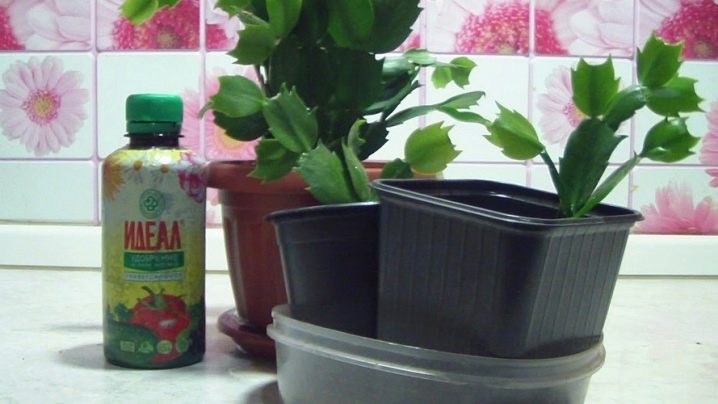
How to take care of it properly?
At home, it is important to follow all the recommendations and requirements for caring for the plant, in this case there will be no problems with its flowering. It is necessary to water the plant if the soil dries up, and not to allow it to dry out in principle. Water it abundantly, but not to the point of a puddle in a pot.
It is important to ensure the temperature regime depending on the season, it is good to feed the Decembrist during the recovery and rest period. Growing a plant is important in a low pot and not too big. The roots of the Decembrist are of a surface type, so a short but wide pot with good drainage at the bottom is enough for him.

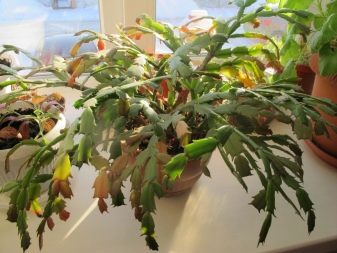
Common cultivation mistakes
Belonging to cactus does not mean that the care of the Decembrist can be carried out in the same way as for ordinary cacti. Some owners of this plant think that it is enough to water it occasionally and no longer participate in its life. This is a strong misconception.
Due to constant lack of moisture the Decembrist will become lethargic and unlikely to bloom. And from abundant watering, the plant will begin to lose foliage. Therefore, it is important to observe the required watering regime. Another common misconception is that the Decembrist grows more actively in large pots. This logic works with most plants, but not with the Decembrist. In its natural environment, the plant has a weakly developed root system and is attached to trees.
Big pot stimulates the plant to develop a root system, but in the end the roots will simply come to the surface. This can also be the reason for refusing to bloom.
The depth of a suitable pot can be selected based on the height of the stem. A container with a depth of 3 times less than the stem of a plant is suitable.
Also, during the flowering period, you should not leave the flower unattended. When setting buds, you need to make sure that the Decembrist does not acquire too many of them. If 4 or more buds are formed on one branch of the Decembrist, it is worth removing some of them. With a large number of buds, the plant simply does not have enough strength to bloom., it itself will begin to throw them off.
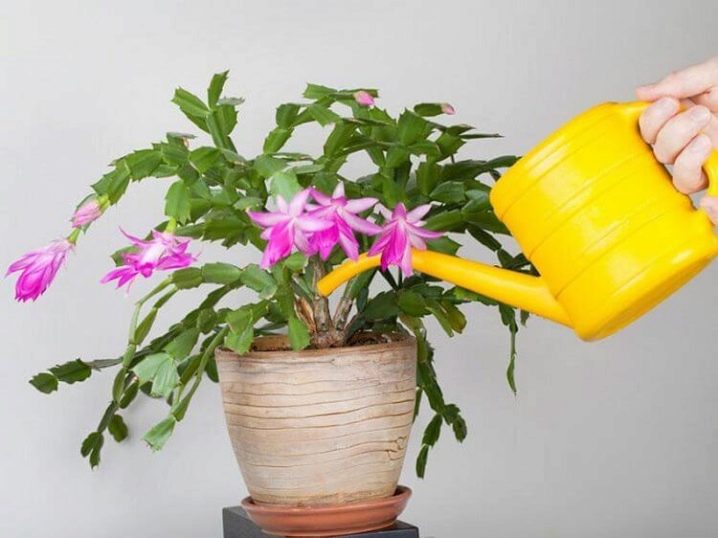























































The comment was sent successfully.